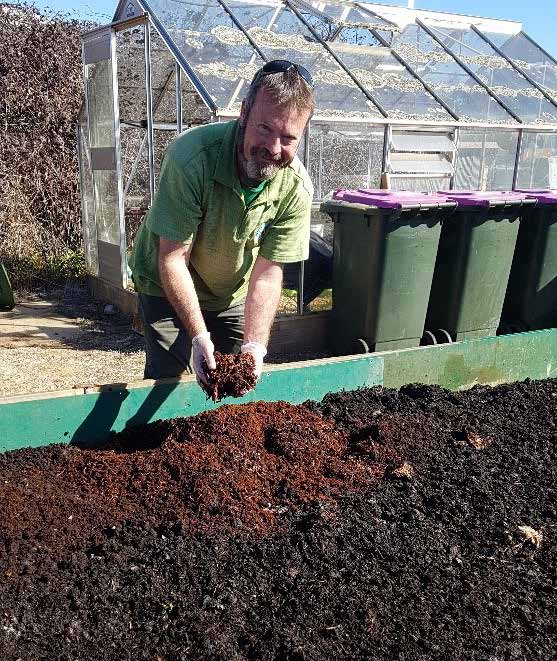Tips for a successful backyard worm farm to reduce household waste
Article and Photos: Cid Riley (Canberra Organic – Winter 2021)
Want to reduce household waste? Did you know worm farms are a great way to reduce household waste and produce castings for your garden, full of nutrients and beneficial microbes? In fact, composting worms are so efficient they can reduce the volume of organic matter by more than 90 per cent.
The three types of composting worms that are most commonly used in Australia are the red wriggler, Indian blue and tiger. These worms are much smaller than the earthworms that you find in garden soil, only growing to about 7.5 centimetres. Composting worms are not very good at burying in soil and much prefer to live in decaying matter. So what is the best way to set up your own backyard worm farm?

The four fundamentals
To keep your compost worms happy, there are 4 fundamentals to keep in mind:
Temperature — Worms are much like humans in that they prefer a temperature between 18–24 degrees. Excessive heat will kill worms and cold conditions will slow them down. Maintaining a suitable temperature for a worm farm is challenging in our climate.
Moisture — A worm farm must always be moist (but not saturated). A worm farm needs good drainage. It will be necessary to water the worm farm in warm weather.
Light — Worms will always quickly burrow away from sunlight as light is lethal to them. A worm farm needs a lid or cover to ensure that the conditions are dark.
Bedding — This is the home base for the worms. When establishing a new worm farm it should have at least 150mm of bedding material. The worms will eat all the bedding material over time, but their preference is to feed on the food scraps you add to the farm. The most suitable materials to use as bedding are high in carbon and water retentive such as:
- coconut fibre block (just soak in a bucket of water)
- newspaper and cardboard (avoid glossy paper)
- sugar cane mulch, lucerne and pea hay
- aged cow, horse or sheep manure
- aged lawn clippings and shredded leaves from deciduous trees, and
- compost.
Use a variety of bedding materials for best results. A favourite of mine is a mixture of coconut fibre, shredded newspaper and worm castings or compost. The bedding should be moist but not saturated. As a guide, if you squeeze a handful of bedding material you should get a few drops of water out.
Worm farm options
Worm farms come in all shapes and sizes, from small self-contained plastic containers to in-ground systems. There are many DIY options too with my favourite being a raised garden bed modified to use as a worm farm.
You need to select a worm farm setup based on the amount of organic waste your household produces each week. The depth of the farm is important as it helps to regulate the temperature and moisture conditions. However, it is the surface area that is important in terms of handling food waste. For a family producing about one kilogram of food scraps each day, I would recommend a worm farm with a surface area of 1 to 1.5 metres square in size.
It is important to think carefully about the position of the worm farm. For example, it is best to keep the popular black plastic worm farms undercover or in a shed/garage. In our climate they can get too cold in winter and too hot in summer, if they are too exposed.
All worm farms need a cover or lid. This will keep the pests out (like cats, dogs, mice, flies, vinegar flies and birds) and also help to maintain the correct temperature and moisture conditions.
Feeding your worms
It is best to feed your worms once or twice a week. Before feeding, always check your worm farm first. Make sure that the farm is moist, the worms are working away close to the surface and that there are no bad smells — a healthy worm farm should smell earthy.
If your worm farm smells bad, it usually means there is something not quite right. Typically, the odour is a result of either over feeding or too much moisture in the farm. Aeration and mixing in some new bedding material will usually solve these problems.
When feeding the worms, it is best to spread the food over a large surface area rather than just heaping it in one spot.
What you should and shouldn’t feed your worms
Worm farms can handle most food waste, however the smaller the farm, the more careful you have to be. For small backyard worm farms, it is best not to include too many acidic foods like garlic, onion and citrus, as well as meat and dairy.
Larger backyard worm farms or raised garden bed-style farms are big enough to handle most food waste. I like to think about worm farming a bit like cooking. Lots of variety and not too much of anything. It’s great to have a little bit of lemon zest, but if we ate a whole plateful of lemon peel it’s going to make us feel sick. It’s like that with worm farms — if they get some lemon peel they’ll be able to handle it, but if you completely fill your worm farm it will create problems.
Collecting the vermicast for your garden
Worm farms produce nutrient-rich castings or vermicast which can be collected once or twice per year and added to your garden.
There are several techniques that can be used to harvest worm castings. The most suitable technique depends on the type of worm farm that you are using. Generally, after a worm farm has been operating for 6 months or more there will be an active area (the feeding area full of worms) and a ‘mature’ area (predominantly worm castings with not many worms). Aim to harvest the mature area of the farm.
After you harvest the castings, break up any clods to get the mix nice and friable and then expose to sunlight — any remaining worms will migrate to the bottom of the pile. The castings can be scraped away slowly and any remaining worms added back to your farm.
Worm farming is highly effective if you get the basics right. And it is incredibly rewarding for you and your garden.

Cid Riley runs a large-scale worm farming business called Global Worming. It manages over six tonnes of organic waste each week sourced from more than sixty sites including government departments, businesses and schools. The large worm farms used by Global Worming are up to 25 metres long and 1.8 metres wide. (Follow on Instagram —@global_worming).
